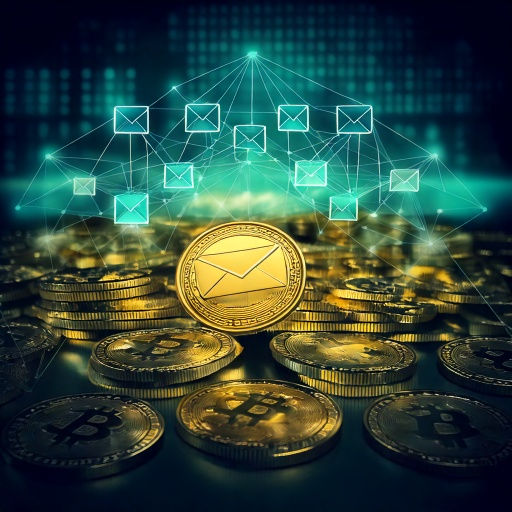The Unseen Battle for Attention: Unpacking the State of Email Outreach Amidst Phishing Scams
- Richard Kreutzer

- Apr 1
- 3 min read
In the vast digital landscape, where decision-makers are bombarded with emails daily, the art of crafting a successful cold email has become a science. Recent research by Hunter.io, analyzing 11 million cold emails sent in 2024, reveals the intricacies of what makes an email campaign truly effective. However, this journey into the heart of email outreach is overshadowed by the looming threat of phishing scams, which have evolved to exploit human psychology and technology.

The Preference Paradox and Phishing Risks
Decision-makers overwhelmingly prefer cold emails as their primary contact channel, with 61% choosing it over LinkedIn (29%) and cold calling (10%). Yet, despite this preference, the average reply rate to a cold email campaign is a mere 4.1%, leaving 95.9% of emails unanswered. This paradox highlights the disconnect between preference and effectiveness, underscoring the need for relevance and trustworthiness in a landscape where phishing emails contribute to a significant number of data breaches. In 2025, phishing remains a primary attack method, with 57% of organizations facing phishing scams weekly or daily, and nearly 1.2% of all emails sent being malicious, accounting for 3.4 billion phishing emails daily.
The Relevance Dilemma and Phishing Tactics
A staggering 71% of decision-makers cite lack of relevance as the primary reason for not responding to cold emails, followed by impersonality (43%) and lack of trust (36%). This emphasizes the importance of tailoring messages to specific needs and interests. Smaller, targeted campaigns with fewer than 50 recipients achieve a significantly higher reply rate of 5.8%, compared to larger campaigns with over 1,000 recipients, which yield a paltry 2.1%. Meanwhile, phishing attacks are increasingly sophisticated, using AI to craft human-like messages that impersonate trusted brands and exploit psychological vulnerabilities.
The Personalization Imperative in a Phishing-Prone World
Personalization is not just a nicety; it's a necessity. 73% of decision-makers value personalized emails, which significantly boost reply rates. Using custom attributes or manual edits to inject personal touches into emails can elevate campaigns from generic spam to meaningful interactions. However, this personalization must be balanced with awareness of phishing tactics, which often use similar techniques to build trust. Advanced phishing attacks, such as spear phishing, target specific individuals and organizations using open-source intelligence to gather personal details, making them appear more legitimate.
Technical Pitfalls and Phishing Threats
Technical factors can also impact success. Using webmail services like Gmail or Outlook instead of custom domains is associated with lower reply rates, likely due to trust issues and how email service providers treat such senders. Moreover, tracking pixels, while useful for analytics, may harm deliverability and lower reply rates. In the context of phishing, malicious attachments and deceptive links are common tactics used to compromise systems.
The Follow-Up Conundrum Amidst Phishing Risks
Follow-ups can be a double-edged sword. While they increase reply rates to 4.9% compared to 3% without follow-ups, excessive follow-ups are a leading cause of spam complaints. The sweet spot lies in striking a balance—enough to remind, not enough to annoy. In a phishing context, attackers often use urgency to prompt actions, making it crucial to verify requests and avoid rushed decisions.
The Future of Email Outreach in a Phishing-Prone World
In a world where AI-generated emails are increasingly common, decision-makers surprisingly don't mind their use, with two-thirds indifferent to whether AI was involved in crafting the email. This openness to technology underscores the evolving nature of email outreach, where relevance and trust remain paramount. However, as phishing attacks become more sophisticated, using AI to mimic human writing styles, businesses must adopt robust anti-phishing strategies to protect sensitive data and maintain trust.
Protecting Against Phishing Scams
To safeguard against phishing, organizations must implement comprehensive anti-phishing strategies, including:
Security Awareness Training: Educate employees to recognize phishing emails and report suspicious activities promptly.
Verification Techniques: Verify sender authenticity and scrutinize email content for spelling errors or urgency tactics.
Advanced Technologies: Use AI-driven cybersecurity tools to detect and block sophisticated phishing attacks.
Conclusion
The state of email outreach in 2025 is a tale of contrasts—between preference and effectiveness, relevance and irrelevance. As we navigate this complex landscape, the challenge lies in bridging these gaps with precision and empathy while protecting against the ever-evolving threat of phishing scams. By embracing personalization, relevance, and trust, and by staying vigilant against phishing tactics, businesses can turn cold emails into meaningful connections that drive growth. In this digital age, where attention is scarce and threats are real, the art of email outreach is not just about sending messages; it's about building bridges to meaningful relationships while safeguarding against deception.
Know more. Investigate better.
Citations:


Comments